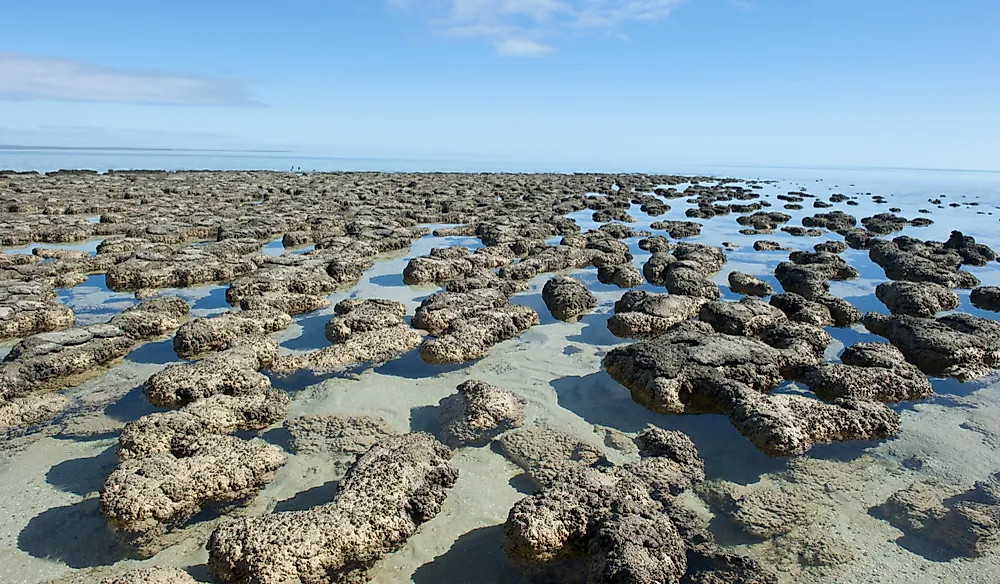What Is A Stromatolite?

Stromatolites are layered forms of sedimentary rocks that are created by cyanobacteria. These sedimentary rocks occur as mounds, columns, and sheets, and are characterized by their distinct laminate structures. Coined in 1908, the name stromatolite is derived from the Greek words stroma, which means "layer," and Lithos, which means "rock."
Formation of Stromatolites
Stromatolites are formed by primitive one-celled cyanobacteria, which are also known as blue-green algae. These deposits consist of thin, alternating dark and light layers. The photosynthesizing cyanobacteria can be found in a wide range of environments including rivers, soils, lakes, and shallow shelves. The organisms are prokaryotic cells, which means that they lack a nucleus that contains DNA, and are some of the earliest forms of life on Earth. In fact, stromatolites, which can be up to 3.5 billion years old, contain evidence of some of the earliest forms of life. These rock structures are formed when the sticky coating or mucilage on the microbial mat of the cyanobacteria traps and binds sediments. The process of photosynthesis by the bacteria also removes carbon dioxide from the water, leading to the precipitation of limestone or calcium carbonate. The organisms then recolonize the sedimentary platform and form another layer through the same process. Over a long period of time, these processes lead to the formation of stromatolites, which grow upwards and can reach several feet in height and thickness.
Precambrian and Present-Day Formations
Stromatolites were common nearly 542 million years ago, during the Precambrian period. The stromatolites were more abundant during this period because metazoans had not yet evolved, meaning that the existence of cyanobacteria was not threatened by organisms such as snails. Stromatolites are still formed today, but their algal mats and films are rarely recognized due to the continuous destruction by worms, snails, and other organisms. Additionally, they are only common in areas where metazoan feeding is restricted by extreme conditions. For example, they are known to grow in abundance in areas such as Shark Bay in Western Australia. Shark Bay was also the first place that living stromatolites were discovered, back in 1956. The matlike layer of blue-green algae grows on the surface of sediments found in shallow waters due to the high rate of evaporation, which leaves high salt concentrations. The high concentration of salt discourages organisms, such as snails, from eating the blue-green algae.
Cyanobacteria and the Evolution of Life on Earth
Cyanobacteria are believed to have influenced certain significant changes in the Earth's history. For example, experts believe that prior to the Precambrian era, Earth had very little oxygen, which at that time was formed through the reaction of water vapor from volcanoes and sunlight. However, photosynthetic organisms contributed to the amount of free atmospheric oxygen during the Earth's earlier periods. Therefore, the increase of stromatolites about 2.5 billion years ago increased oxygen levels, gradually transforming the atmosphere from being carbon-rich to oxygen-rich. Higher volumes of atmospheric oxygen led to the next evolutionary step that was characterized by the eukaryotic cells, which have a nucleus.











